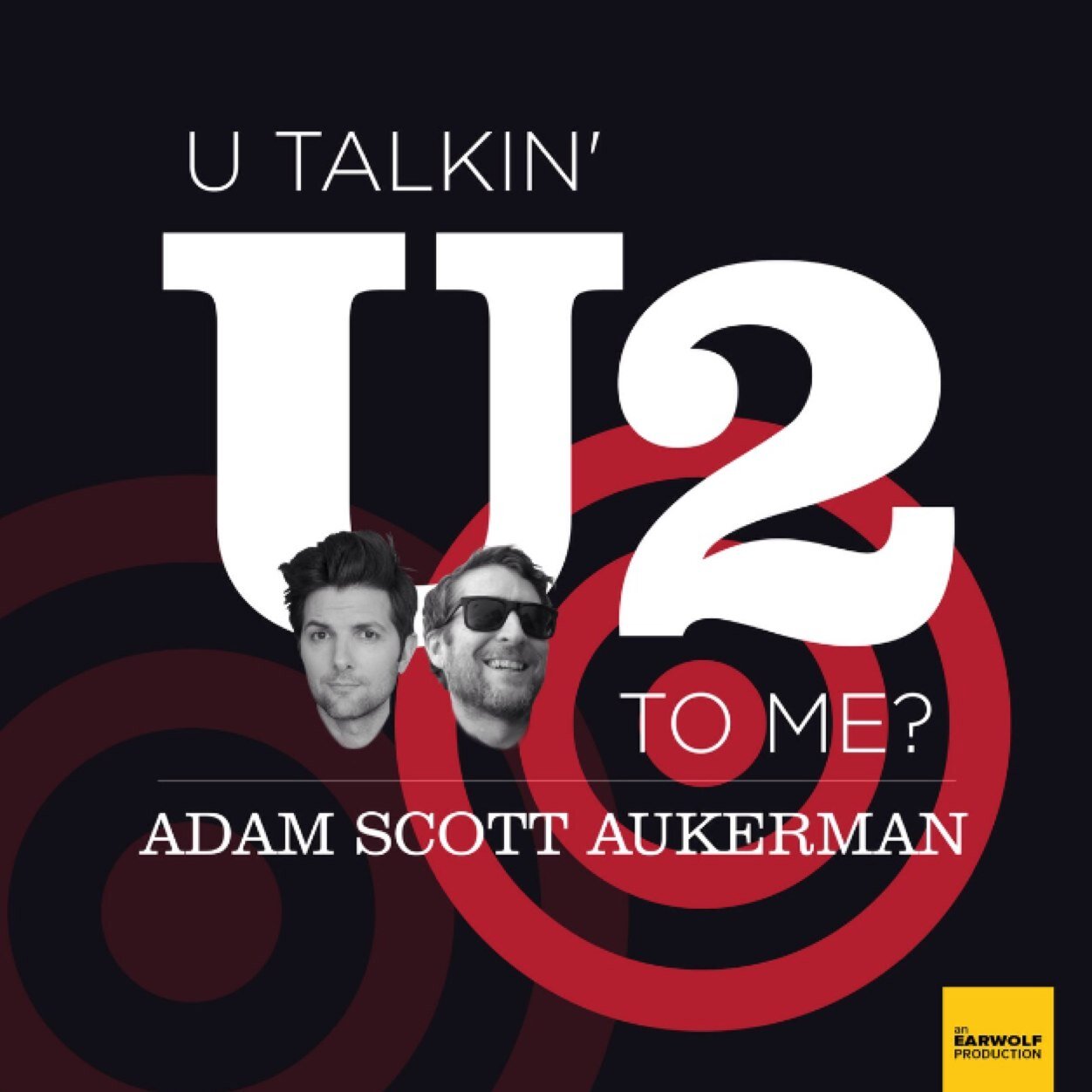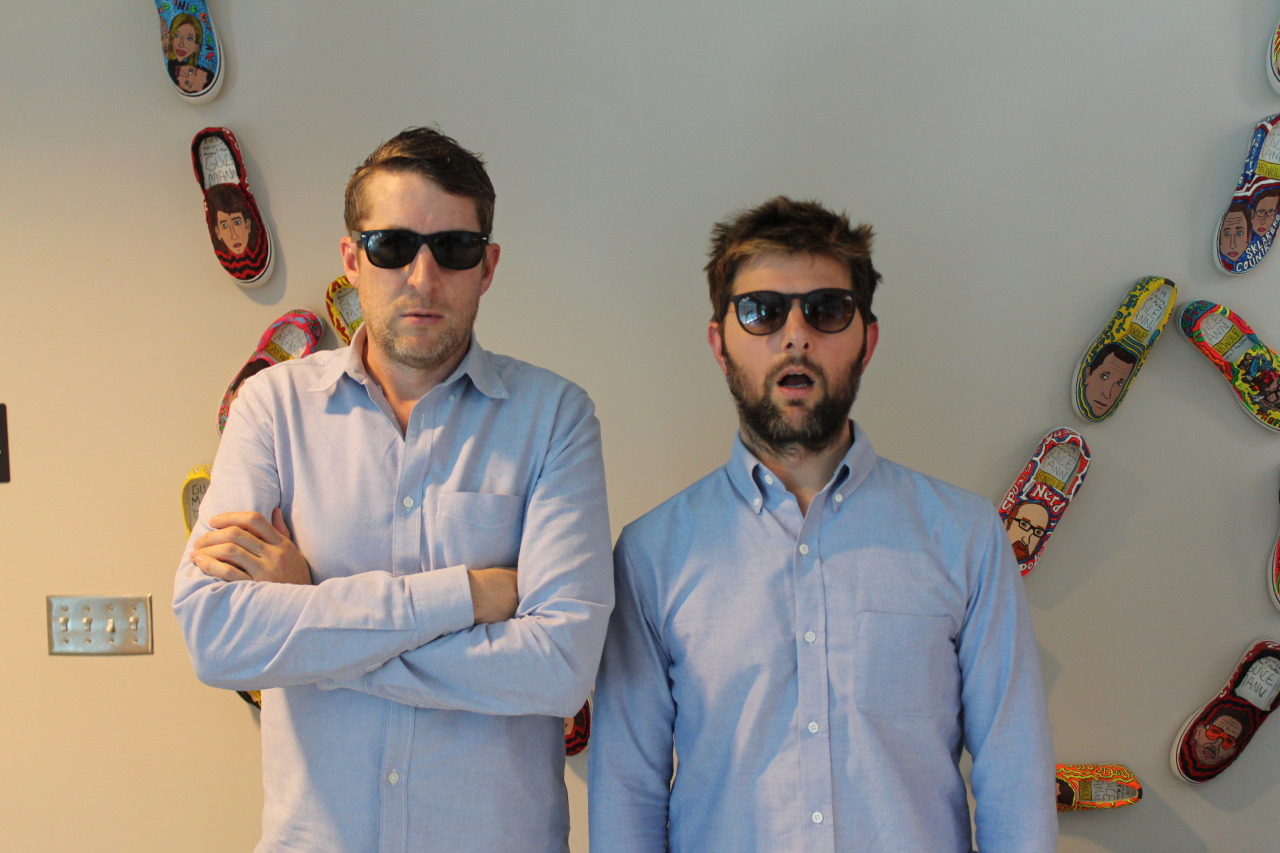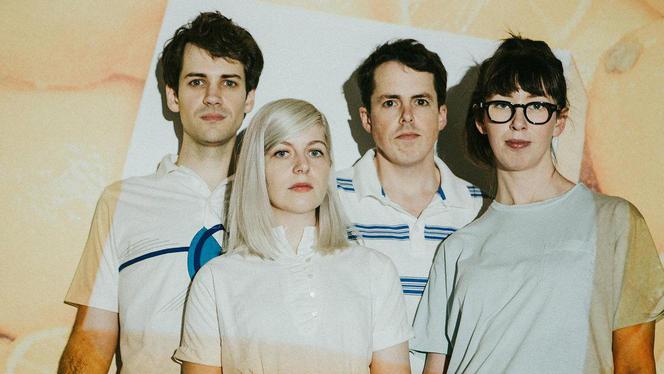U Talkin' U2 To Me? – An Album-by-album Descent into Insanity
/U Talkin’ U2 To Me? is a podcast that wades the listener into the warm embrace of insanity over the course of multiple hours. Billed as a “comprehensive and encyclopedic” look at U2, the podcast is an epic album-by-album exploration of the Irish rock band’s discography and decades-long history. It’s a deep dive into the bleeding emotion behind artistry and the raw humanity that it takes to create a lasting piece of culture. Just kidding. While UTU2TM may not be that serious, it still manages to be one of the most hilarious, endearing, and (occasionally) earnest podcasts that I’ve ever listened to.
Hosted by Scott Aukerman (Comedy Bang! Bang!) and Adam Scott (Parks and Recreation), U Talkin’ U2 To Me? is a spiritual successor to Analyze Phish, a show taking place in the same “podcast universe” in which comedian Harris Wittels tries to convince Scott Aukerman why he should like the band Phish. The conceit of UTU2TM is similarly simple: Scott likes U2. So does Adam. Together, they combine comedic powers to systematically walk the listener through the band’s discography in an effort to expel all of the U2-related information in their heads.
Forecasted by a teaser clip that found Adam Scott recounting a childhood memory of the 1983 US Festival, U Talkin’ U2 To Me? officially launched one week later in February of 2014. The first episode began humbly enough as the duo laid out their plan to discuss three albums per episode in the lead-up to U2’s then-unnamed thirteenth studio album. Within several minutes it became clear that things were destined to go off-track as Scott and Scott venture off on multiple tangents all while simply trying to describe the conceit of the podcast. Eventually, they settle on a rambling half-serious mission statement:
What we want this podcast to be is the definitive, comprehensive encyclopedic compendium of all things U2. In other words we are going to talk about it all. If you have never heard of U2, you will feel like you have heard of U2.
No less than a minute after outlining this semi-lasting objective, the two stumble across the podcast’s first great recurring bit: saying “Achtung Baby” over and over again for minutes on end. Sprang from a moment of improvisation while listing off the band’s discography, Aukerman goofily pronounced the name of the 1991 album with a full-throated bellow which prompted Adam Scott to respond similarly. Eventually, the two find themselves volleying increasingly-accented shouts of “ACHTUNG baby” back and forth at each other like a vocal tennis match. It’s absolutely absurd to behold.
Eventually Scott and Scott emerge from their tears of laughter long enough to move the podcast forward, but this is the moment that (less than ten minutes into their inaugural episode) forever sets the tone of the show and gave the listener a glimpse of the beautiful insanity that was about to unfold on a weekly basis.
The Achtung Baby bit sounds so nonsensical to write out on paper (and it is nonsensical, even in the context of the show) because it’s a joke that defies logic. It’s abjectly stupid, yet somehow this string of cartoonish exclamations feels right at home on U Talkin’ U2 To Me? It’s so mind-bogglingly silly that you begin to crack up by proxy just witnessing to these two grown men entertain each other as they break down into complete hysteria.
The podcast’s initial plan of three-albums per episode quickly deteriorates to one album per episode (and eventually no album per episode) simply because the hosts end up going on so many diversions. Often recorded late at night after a full day of work, the recordings begin to sprawl into hilariously-rudderless, sleep-deprived ramblings. Even so, the most charming element of U Talkin’ U2 To Me? (and the thing that will keep you coming back) is the chemistry between the two hosts. As the episodes pile up, the Scotts quickly develop their own in-jokes, references, and everything short of a unique language.
Scott Aukerman and Adam Scott clearly enjoy each other’s company, and eventually, the podcast morphs into two friends recording multi-hour dick joke-laden podcasts only loosely centered around an album. This artificial extension ended up working in their favor because after several months of episodes U2’s album was still nowhere in sight. The show then became the podcast equivalent of a stalling tactic, killing time until the band released their highly-anticipated thirteenth album.
Over the course of several episodes, the show’s scope gradually expands into its own self-referential universe. The Scotts bring guests into the mix, record a segment in the white house, and create a punch-drunk 2-hour podcast based on a one-off joke from an earlier episode. Listening to the pair’s spiral into madness over the course of 20-some episodes is a thing of beauty and something that I’ve never seen accomplished in the medium of podcasting.
The show’s first act culminated in June with the sixteenth episode, a “commentary special” in which Scott and Scott host a new podcast laidover the top of their first episode. It’s a mind-bending experience that served as a conceptual high point to the show’s already-meta narrative. With the U2’s new album still an unknown, the podcast went on hiatus until the record’s release. This was the end. For now.
In September of 2014, Apple held their yearly press conference. The tech giant announced their new iPhone, unveiled the Apple Watch, and made wallets obsolete with Apple Pay. At the tail end of the presentation, after nearly two hours of incredible, amazing, awesome products, Tim Cook threw the audience for a loop and introduced U2.
The lights dimmed, and the band came out to play “The Miracle of Joey Ramone.” After the performance, Tim Cook joined the band on stage for one of the most awkward conference exchanges in recent memory and revealed that the band’s albumless five-year drought was about to come to an end. After some back and forth, the two parties announced that U2’s thirteenth album was out now. Not only that, it was free, and it was already on everyone’s iPhone.
I was at work during the conference, and as excited as I was about the prospect of upgrading my phone, my biggest takeaway was the fact that this meant we would have a new episode of U Talkin’ U2 To Me soon. I raced to the /r/earwolf subreddit and joined hundreds of other podcast nerds who all found themselves excited by-proxy at a new U2 album because it represented the payoff the entire podcast’s run.
It’s worth mentioning at this point that I don’t even like U2.
Even in my fanboyish excitement at new Apple devices, all I cared about was that a band I’m lukewarm on was releasing an album, just because it meant I’d get a new podcast. It’s probably the weirdest string of events that I’ve ever found myself excited at, but I was ecstatic nonetheless.
And sure enough, the UTU2TM hosts met up the following day and released their celebratory, 2.5-hour Songs of Innocence episode only two days after the album’s release. I was overjoyed.
The album’s release was a total surprise, a highly-publicized rollout, and it harkened back to an earlier collaboration that warmed my heart. The internet hated it. Eventually, the Scotts got back together several weeks later to discuss how the album was sitting with them, and the internet’s overwhelminglynegativereaction to the album showing up on their phones. The episode that came out after the album’s release was a (seemingly) single bright spot in a sea of negativity as people complained that a free album showed up on their phones.
From there the podcast seemed over. The band’s new album was released, and the duo had (more or less) achieved their goal of discussing each album. They surprised us a few more sporadic episodes including a Christmas special, a live podcast, and a concert review. Each of these came after month-long breaks, so they were all pleasant surprises that I devoured almost immediately once they manifested in my podcast feed.
Then, in August of 2015, it happened.
I refreshed my podcast app and saw a mysterious download titled “U2 Talk 2 U.” Initially thinking it was a typo or that I was misreading it. I scanned the episode’s description to make sure that I understood it correctly. My eyes started watering. Adam Scott and Scott Aukerman had interviewed U2.
It was the climax of the entire show. A podcast that started out nearly two years ago with a period joke in the first two minutes now somehow found itself talking to one of the biggest bands in the world. It’s a journey that has to be experienced from the beginning, and one that I’m not even spoiling by talking about here because it pays off so many of the shows different in-jokes. It’s the heart-warming culmination of a two-year journey. Something that started out as an unassuming gag between two friends instantly became legitimized. Every dick joke had led to this.
U Talkin’ U2 To Me? is abject stupidity, and I mean that in the most complimentary way possible. This podcast came out at a pivotal time in my life where nearly everything seemed to be falling into place and shifting for the better. I credit UTU2TM with not only entertaining me for hours upon hours, but for improving my outlook on life and giving me a formative crash course in this silly comedic tone.
It’s one of the few podcasts that I’ve listened to multiple times in its entirety, and it benefits from both its limited run nature and the 22nd episode’s payoff. I still can’t describe how elated I was when I saw that episode pop up in my iTunes. The podcast has more surprises, inside jokes, and humor than almost everything else out right now. And it’ interesting to see how the little things (like recording late at night) led to a memorable and impactful experience. It’s an unlikely pairing and an unlikely topic that I ended up caring about way more than I ever thought I would.
The real beauty of the podcast comes from how often and how abruptly the hosts can fluctuate between moments of genuine, unbridled fandom, and delirious, unhinged absurdity. It became a blueprint for my recent sense of humor and willingness to embrace the absurd and stupid. And, it’s a horrible segue, but I did end up coming out of the podcast liking U2, if for no other reason than the music’s association with dozens of jokes.
U Talkin’ U2 To Me? is a force for good. An impossibly-dense multi-hour dive into the depths of exponentially-increasing goofiness. And more importantly, an honest showcase of genuine fandom. It’s something to aspire to on an artistic level, and a journey that is worth embarking on whether you like U2 or not. It’s an achievement of the medium and should be required listening for any podcast, music, or comedy fans.
It’s something that must be heard to be believed.
It’s a good rock and roll uhh podcast.



















































